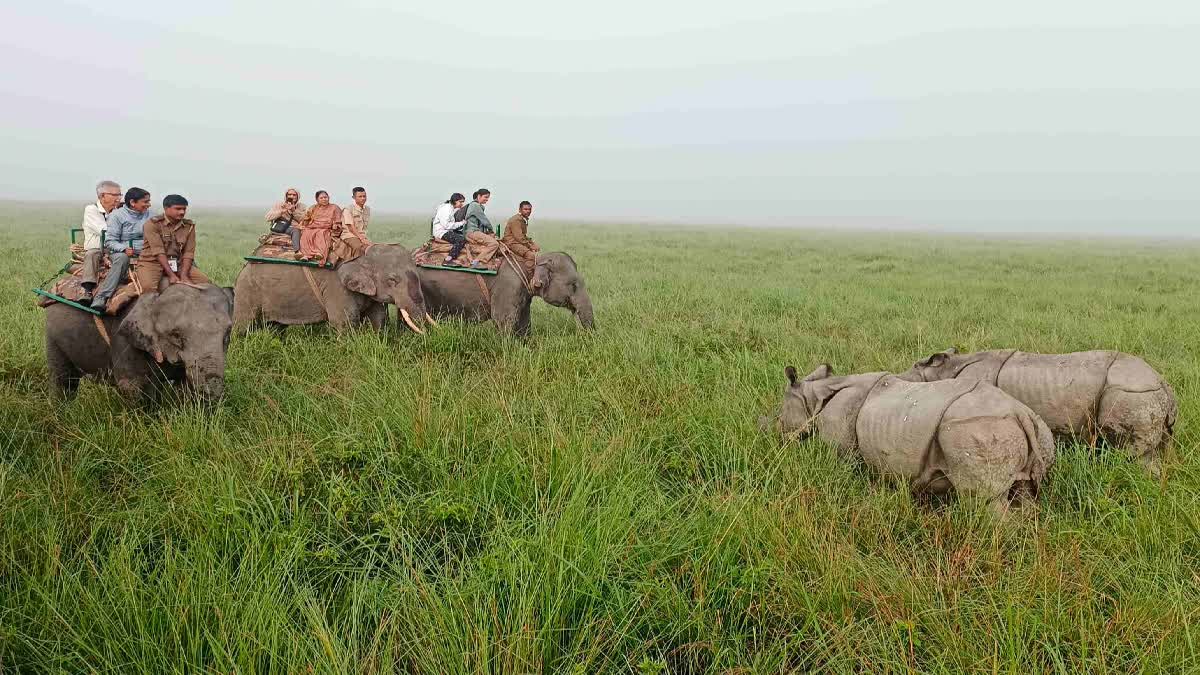Kaziranga:Assam's Kaziranga National Park is famous for its one-horned rhino population. With 2,613 rhinos counted in 2022, the park is also the home to the highest one-horned rhino population in the world, i.e., about 70 per cent of the world's total one-horned rhino population is in Kaziranga.
While many who visit the park every year are aware of the wildlife diversity of the park that includes the Big Five—the one-horned rhinos, royal Bengal tigers, elephants, water buffalos, and the eastern swamp deer—many are not aware that the park's name, ‘Kaziranga,’ is no less diverse and interesting than the wildlife it shelters.
Kaziranga is not just a geographical location but a tale weaved into the history, mythology, and cultural significance of the people and cultures around.
Kaziranga In Folk Tales And Legends
Although there is no documentary evidence as to how the park got its name, local communities who live around the park recall different stories and myths regarding the origin of Kaziranga.
Padma Gogoi, a local and an author, said that the geographical location derived its name from a childless couple, Kazi and Rangai, who used to live there. Perturbed by the fact that they do not have any children, they seek the blessings of the saint and scholar Srimanta Sankardeva, who blessed the couple but in turn, asked them not to long for a child but to dig a pond in the area. The couple digs the pond out of sheer devotion, and oral history has it that the act of Kazi and Rangai, rooted in devotion, is believed to have given birth to the name “Kaziranga.”
The legend narrated by Gogoi, who hails from the Ahom community, dates back to the reign of Ahom King Swargadeo Suhungmung Dihingia Roja, who was at the helm of the Ahom Kingdom between 1497 and 1539. While Gogoi linked the folktale of Kazi and Rangai to the birth of the name Kaziranga, another local, Joysingh Phangsho, said that the name Kaziranga is linked to a goddess of the Karbi community, Kajir Ronghangpi.
“The Karbis believe that Goddess Kajir Ronghangpi came down to earth through that area and that's how it became Kaziranga,” Phangsho said adding that according to the legends of the Karbis the Goddess brought rhinos and the seeds of paddy to the earth from her abode in haven and cultivated paddy on earth. The Karbi folk tales have it that rhinos were used by the Goddess to till the land for paddy cultivation.
